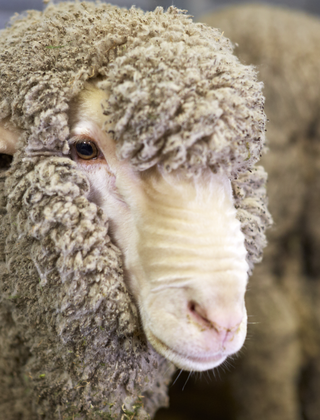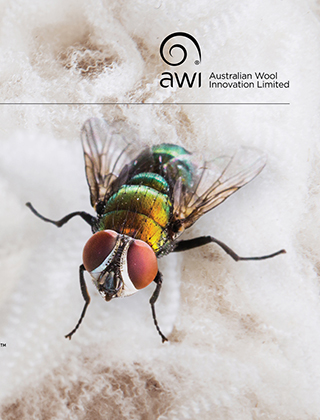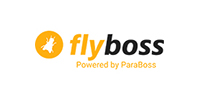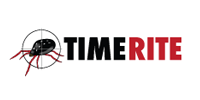Non-chemical flystrike control R&D update
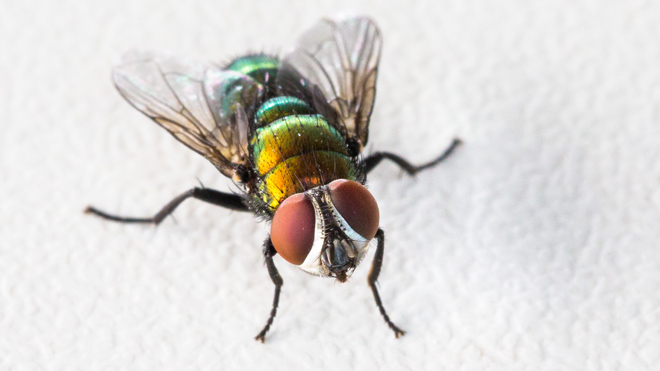
AWI is investing in a range of biological control methods for targeting the Australian sheep blowfly. These aim to minimise the risk of flystrike while also having low residue and reduced environmental impacts.
Chemical resistance in sheep blowflies is compromising the effectiveness of current sheep flystrike control options, and there is potential for their access to be further restricted due to workplace health and safety, and residue and environmental concerns.
In response, AWI and its research partners are investing in a range of innovative technologies and natural formulations to provide new approaches to target the sheep blowfly. The investments not only aim to minimise the risk of flystrike in sheep but also have a minimal environmental impact.
The projects are part of the ‘New pest and disease management solutions’ initiative of Woolmark+, the roadmap designed to help woolgrowers and supply chain partners work together to accelerate the wool industry’s transition towards a nature positive future.
Below is an update on three of these AWI-funded projects.
Sterilised blowflies to render the flystrike problem impotent
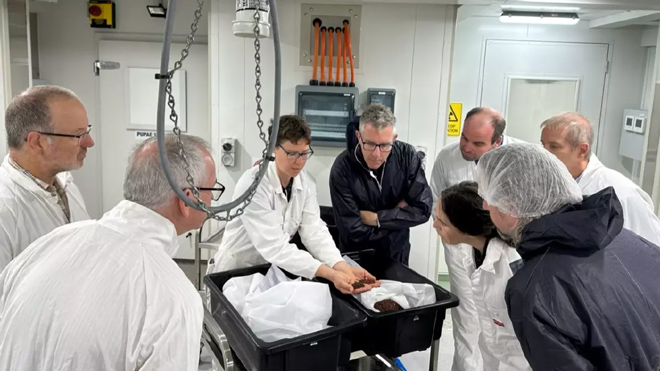
Researchers and funders examining irradiated blowfly pupae at the facility for the mass rearing of sterile blowfly males on Kangaroo Island. PHOTO: Richard Glatz
Millions of sterile male blowflies are being released on Kangaroo Island in South Australia to see whether they will suppress the blowfly reproduction rate and population, and therefore the incidence of flystrike.
The release of masses of sterile male insects into the wild to mate with the females and thus reduce the next generation’s population is a method of biological insect control that has been successfully used worldwide for decades for numerous pest insects.
The Australian sheep blowfly Lucilia cuprina is thought to be a good target for this sterile insect technique (SIT). Sterilisation is induced through irradiation on the reproductive cells of the insects, and not through genetic modification.
The release of sterile male blowflies on Kangaroo Island (4,500 km2 area, 600,000 sheep) is under way in a project led by South Australian Research and Development Institute (SARDI), with the current (second) phase of the project funded by SARDI, AWI, Meat & Livestock Australia, Animal Health Australia, Livestock SA and the University of Adelaide.
As well as aiming to successfully suppress blowflies on Kangaroo Island, another key goal of the project is to acquire the knowledge and skills for SIT to be applied in mainland Australia.
“It is hypothesised that if producers could work together to strategically release sterile male blowflies within defined regions at targeted times, it might reduce fly pressure and thus reduce woolgrowers’ need for other fly management tools such as mulesing or chemicals,” said AWI Program Manager, Animal Wellbeing and Industry Resilience, Carolina Diaz.
“However, it is important that the sterile male blowfly density is sufficient to dominate the already present wild, non-sterile male population, so there is less competition for the sterile blowflies to mate. Even if initially successful, there is always the risk that wild populations could be reintroduced through uncontrollable biosecurity gaps.”
The relative isolation of Kangaroo Island means that it is a good testing ground for the technology.
The pupae of about 12 million blowflies were released during a 12-week period starting in September last year on the Dudley Peninsula (650 km2) on the eastern end of Kangaroo Island.
Early results indicate that sterile flies have become well-established within the release areas, with a good survival rate.
Three years of large-scale releases across the rest of Kangaroo Island are planned over consecutive spring and summer periods, with the aim to eradicate blowflies on the Island by the end of 2027. This will require the rearing and release of up to 50 million sterile blowflies per week.
Tiny tea tree oil nanoparticles to battle blowflies
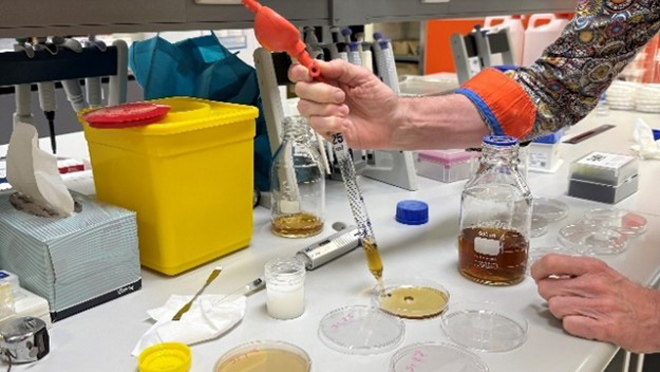
A tea tree oil formulation being tested against sheep blowfly by scientists in the lab.
A project co-funded by AWI aims to use nanotechnology to develop a tea tree oil biopesticide that provides prolonged, safe and residue-free flystrike protection for sheep.
When biopesticides are applied as a blowfly repellent using current delivery methods, the biopesticides unfortunately have shorter protection periods and lack potency compared to the available chemical options. This means that, to date, biopesticides have not been a practical option for woolgrowers.
However, nanotechnology might provide a solution. Nanotechnology is essentially the study of very small things – nanoparticles less than a thousandth of a millimetre in size. Building on previous AWI investment in nanotechnology for flystrike control, researchers are developing a promising new method of delivering biopesticides that provide extended protection and are softer on the environment.
“Led by the Queensland Government’s Department of Primary Industries, this project is aiming to design and test natural and environmentally friendly tea tree oil nano-formulations to give prolonged periods of protection against flystrike, with minimal residues and off-target effects,” said AWI’s Carolina Diaz.
“The project is currently in the laboratory phase and results look promising. Although it seems that the protection period might still not be as long as that achieved by traditional flystrike prevention chemicals such as Dicyclanil, the protection period provided by the tea tree formulation could be long enough to be effective for use at lamb marking, for example.
“The research is still in its lab stage. If the researchers can demonstrate sufficient effectiveness of the formulation against sheep blowfly in the lab, the project will then progress to animal trials.”
The research is co-funded by AWI, Beef + Lamb New Zealand and AgriFutures (representing the tea tree oil industry). The Queensland Government’s Department of Primary Industries and the University of Queensland are providing in-kind contributions. In-kind contributions of technical expertise and tea tree oil for the trials is also being provided by Main Camp, the largest tea tree oil producer in Australia.
Research sets a trap for the sheep blowfly
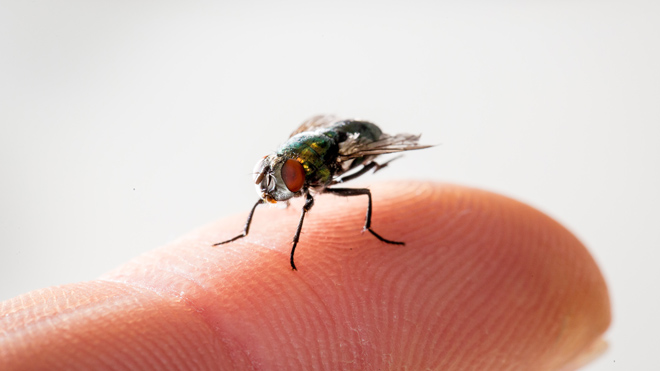
Researchers are partnering with woolgrowers across three consecutive flystrike seasons to find an effective trapping solution.
A project co-funded by AWI aims to develop a more effective and potent way of trapping sheep blowflies so that blowfly populations can be suppressed in wool-growing areas of Australia, thereby reducing the incidence of flystrike.
The trapping solution would be an additional flystrike prevention option, with long-term effectiveness, minimal labour for woolgrowers, and the best outcomes for sheep. The project, which began in December 2023, will tackle the limitations of current trapping options, which include their inability to target specific fly species and a negligible suppression of female numbers.
The project is being carried out by Deakin University, with a grant from the Australian Government’s Australian Research Council and funding from AWI.
“The project’s preventive approach to flystrike is a highly promising initiative that has the potential to make a significant contribution towards developing a tool to combat the viability of the Australian sheep blowfly,” said AWI’s Carolina Diaz.
“It aims to provide an effective, eco-friendly, low-maintenance approach to flystrike, providing national benefit through improved animal welfare, reduced costs and labour for woolgrowers, and alignment with sustainable practices and market demand.”
The researchers are currently utilising chemical and molecular approaches to identify the key factors, like fleece rot, that attract female flies to vulnerable sheep, beyond traditional predictors such as dag and wrinkle scores.
The project has successfully engaged 13 farmers from five states, highlighting a diverse range of locations. Skin swabs have been collected from sheep to study their skin microbiome, and fleece samples have been taken to analyse volatile chemical profiles and improve chemical analysis methods. Additionally, flies have been trapped on these properties to examine the diversity of local populations and their digestive tract microbiomes.
Ultimately the aim is to develop a novel lure technology (fly traps) able to be commercialised and used on-farm, at scale across Australia.
The lure will be tested on multiple properties and in numerous states, taking into account geographic and climate variation across Australia, to determine the effect of the lure on wild fly populations and flystrike rates.
This article appeared in the Winter 2025 edition of AWI’s Beyond the Bale magazine that was published in June 2025. Reproduction of the article is encouraged.






